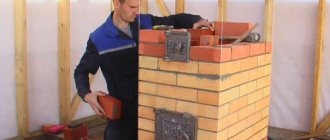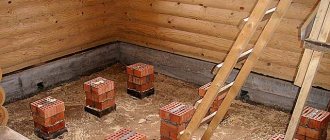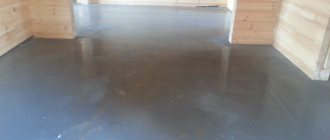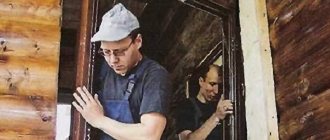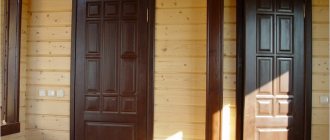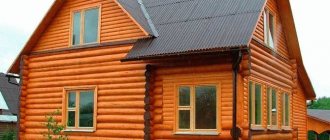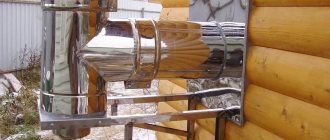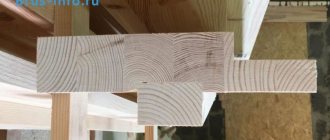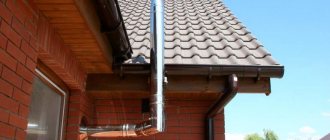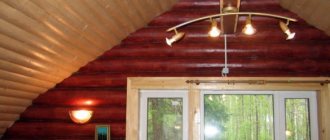Fire safety rules for the operation of stoves in bathhouses or wooden houses require the installation of a fire-resistant wall. This is due to the fact that strong heat comes from the furnace body, which can heat up to 400°C. It spreads throughout the room, but primarily hits the walls located in the immediate vicinity of the building.
What materials and how to make a fire-resistant wall
If the walls are made of wood, then their charring begins. Wood loses moisture very quickly, and under such conditions the risk of fire increases several times. Fire walls will be a reliable way to insulate wood from heat and guarantee fire safety.
The wall behind the stove An option for protecting a wooden house from accidental fire
The wall behind the stove (more precisely, its protection) is a very important issue of fire safety.
This issue is especially relevant if the house is wooden. And for good reason! After all, a negligent attitude towards such a place as the “stove wall” can lead to disastrous consequences. To neutralize the dangerous effects from the main heater in a building on walls located close to it, various methods and construction technologies are used. Starting from the use of protective mastics and impregnations that are used to treat the wooden surface, and ending with the arrangement of so-called “fire-retardant shields”.
In the first case, the wall near the stove retains its original appearance. Those. a wooden house remains that way internally. This option will be useful when you want to preserve the image of wood in the interior. But there is one significant drawback. Over time, wood shrinks, becomes deformed and even cracks. And this leads to the formation of “weak points”. And to neutralize the possible risk of fire, the wall behind the stove requires periodic treatment of the wooden surface with protective agents.
The second option is more durable and more reliable. He suggests that insulation of the walls from the furnace is carried out by installing a fireproof shield. Let's look at this option in more detail using an example.
The easiest way is to install a sheet of metal to the wall of a wooden house from the stove side. Yes - simple and fast. But this approach will clearly harm the interior of the house! In this case, decorative finishing of the wall behind the stove will be difficult. And, besides, the efficiency of such a design will not be the highest.
There are many options for arranging a shield. And here is one of them. The wall near the stove is lined with non-flammable thermal insulation to reduce the impact of hot air on the wood, and the top is covered with non-flammable sheet material to prevent the surface from igniting when a coal or spark hits it. It usually consists of a sheet of metal (not the best option), fireproof gypsum plasterboard, LSU, etc.
So, we've sorted out the materials. Next, let's look at an example of how a wall near a stove is insulated from harmful influences.
First of all, the wall behind the stove is prepared for work. We remove sawdust and other debris that is on it. This, of course, is not necessary, but it will not be superfluous.
Next, a metal profile and self-tapping screws are used. With their help, we equip the frame of the future “thermal shield”.
When the frame is ready, we install thermal insulation slabs of stone wool into it...
... and sew it up with LSU sheets.
31, total, today
Step-by-step instruction
Thermal insulation work is carried out taking into account certain rules and safety standards. It is first recommended to decide on the method of insulating the stove. The following elements are thermally insulated in the furnace structure:
The first structure is insulated in the following cases:
- reduction of heat consumption - thermal insulation work is carried out when the fireplace or stove is not designed correctly, when all the heat comes out through the chimney (due to excessive draft or the use of materials with high heat transfer);
- insulation retains heat;
- elimination of condensate: if the pipe is not insulated, condensate collects in it, it destroys the pipe masonry or welded coating joints.
Experts recommend insulating the surface of the stove located close to the walls of the house. Otherwise, cracking of the brick will occur due to temperature fluctuations. Thermal insulation between the wall and the stove is carried out using the following materials:
- asbestos slabs;
- thermofoil (as a heat reflector).
The method under consideration is used if the space between the stove and the wall exceeds 5 mm. If the distance is small, then asbestos cannot be used (due to the composition of the material).
It is possible to carry out thermal insulation work using the following technology:
- strengthening the wall using metal sheet hangers;
- installation of slabs of ceramic or asbestos insulating material;
- filling gaps and seams with mineral wool;
- winding the pipe with an external reflector (foil).
Since mineral wool does not tolerate condensation, a special material should be used to insulate this seal. A similar technology is used for furnace thermal insulation. At the same time, the wall does not heat up or heat up.
Protective screens near or around the oven
Screens are shields made of brick or metal that protect walls from intense thermal radiation. Similar protection is used when installing metal stoves.
- Metal screens are made from steel or cast iron sheets, these
casings surround the heat source with a distance of 3-5cm.
Additional frontal or front shielding, which is located on the walls depending on the location of the stove, will not hurt. The protection guarantees the wood from overheating, reducing the temperature by 100 degrees or more, and provides the opportunity to save space in the steam room. A stove protected by a casing can be installed at a distance of 50-55cm from the wall.
Installation of screens is simple. The casing, equipped with legs, is secured to the floor by side or front screens - with galvanized nails or self-tapping screws.
- Brick screens are masonry used to cover the stove with
on all sides, the same casing, only made of brick. Another method is to lay half a brick between the firebox and a wall made of solid fireclay bricks laid on a solution of clay and cement. The width of the wall should be 120mm, although there is an opinion that it is permissible to put 60mm in a quarter of a brick, but it should be remembered that in this case the thermal insulation value is reduced by exactly half. It is recommended to raise the height of the masonry 20-30 cm above the surface of the firebox, but if you raise it to the ceiling, it will not be worse.
We suggest you familiarize yourself with Protecting the wall from a gas stove
The screen should be placed at a distance of 10-15cm from the wall, 5-15cm from the stove, that is, the space saving is 30-40cm
Protective screens are effective; they reduce the temperature to a level acceptable when using high-temperature fuel units. The same function is performed by wall cladding made of non-combustible materials.
Such a system will need to be implemented when installing a potbelly stove in the corner of the room. You can mount or lay out several screens from brick, installed at a short distance from each other. In this case:
- The first screen protects a person from touching the iron stove and getting burned. It is usually made of refractory or fireclay bricks;
- To protect walls made of flammable material, a second layer of protection is provided. It can be made of brick or covered with a barrier made of sheet steel with a mirror-like front surface. In this case, heat waves will be reflected from the mirror and spread faster throughout the room;
- if the foundation is insufficient in size or it is impossible to manufacture it, it will be necessary to lay a protective screen made of durable fire-resistant material on the wooden floor. This can be a sheet of steel or a decorative layer of heat-resistant clinker tiles or porcelain stoneware. The surface will first have to be covered with a layer of thermal insulation.
Screens are shields made of brick or metal that protect walls from intense thermal radiation. Similar protection is used when installing metal stoves.
- Metal screens are made from steel or cast iron sheets, these
casings surround the heat source with a distance of 3-5cm.
Advice! When purchasing a metal sauna stove, you should give preference to a model equipped with a metal casing. Its cost is not much higher, but the issues of wall insulation are eliminated.
Installation of screens is simple. The casing, equipped with legs, is secured to the floor by side or front screens - with galvanized nails or self-tapping screws.
- Brick screens are masonry used to cover the stove with
on all sides, the same casing, only made of brick. Another method is to lay half a brick between the firebox and a wall made of solid fireclay bricks laid on a solution of clay and cement. The width of the wall should be 120mm, although there is an opinion that it is permissible to put 60mm in a quarter of a brick, but it should be remembered that in this case the thermal insulation value is reduced by exactly half. It is recommended to raise the height of the masonry 20-30 cm above the surface of the firebox, but if you raise it to the ceiling, it will not be worse.
The screen should be placed at a distance of 10-15cm from the wall, 5-15cm from the stove, that is, the space saving is 30-40cm
Important! Functional openings for heat exchange should be made in the lower part of the masonry. Protective screens are effective, they reduce the temperature to a level acceptable when using high-temperature fuel units
The same function is performed by wall cladding made of non-combustible materials.
Protective screens are effective; they reduce the temperature to a level acceptable when using high-temperature fuel units. The same function is performed by wall cladding made of non-combustible materials.
SNiP standards for the location of the furnace from the walls
The standards for these requirements are specified in 2 main documents:
- SNiP III-G.11-62;
- SNiP 2.04.05-91.
Based on these regulatory documents, each owner of a solid fuel stove is required to maintain minimum clearances from the wall and ceiling, taking into account the surface material:
| Parameter | Requirement |
| Installing the stove on a floor made of flammable materials. | The distance to the bottom of the stove must be at least 140 mm. |
| Foundation size. | When installing a steel stove on a wooden floor, the size of the foundation should be 1000 mm larger than the dimensions of the stove. |
| The ceiling is protected by asbestos slabs, plaster and sheet metal up to 1 cm thick. | In this case, the brick-lined stove is made in height so that the gap to the ceiling is at least 250 mm. |
| When installing a steel stove with a protective layer of thermal insulation. | The minimum distance to the floor slab is 700 mm. |
| Installation of a steel stove without a protection layer. | This size increases to 1000 mm. |
| Minimum dimensions for walls according to SNIP from 1962 | |
| Distance from stove to wood stove with unprotected surface. | From 1000 mm. |
| The walls are lined with brick and plastered with lime mortar with a layer of 25 mm. Or an asbestos heat insulator 4 cm thick is fixed. | 130 mm |
| The wooden walls are lined with brick, 120 mm thick and plastered with lime and asbestos. When installing protection on the walls in the form of a 40 mm asbestos-vermuculite slab. | 300 mm |
By maintaining the minimum dimensions, or better yet, making gaps with a small margin, every owner of a wooden house can be sure that its walls and ceiling are protected from high temperatures.
One of the main methods of protection is the manufacture of devices installed to protect the front and side surfaces near the stove itself.
Characteristics and composition
Before talking about the characteristics of the product, we should understand what we are dealing with, namely, talk about the composition. It may change from manufacturer to manufacturer, but the essence remains the same. The main component of mineralite is cement.
It is at least 70% here. The rest is taken up by cellulose, as well as special additives. Despite the appearance and overall strength of the product, mineralite does not contain asbestos. This means that when heated, not a single gram of harmful substances is released, and destruction is also excluded.
Asbestos is known to even explode at critical temperatures. All products must include hydrobisifiers. These are special elements that protect the structure from moisture absorption, which prevents cracking in frosts, possible rotting and other types of damage.
Now, it's time to move on to the characteristics. Let's list the most important of them:
- High strength. This applies not only to exposure to shocks and external damage, but also to the effect of moisture on the surface when it is heated to a high degree, for example, in a bathhouse, as well as resistance to temperature changes and air humidity levels. The surface and structure as a whole are resistant to humidity levels, which expands the scope of use even to outdoor use.
- Does not burn. Manufacturers of mineralite indicate the class “NG”, which indicates the complete non-flammability of the product. This makes its scope wide and not limited only to saunas and baths.
- Invariance under various influencing factors. As previously mentioned, water repellents prevent moisture from getting inside. As for low/high temperatures, in the range from -100 to + 180, the structure does not react in any way, including the properties of linear expansion remain unchanged. The product is also resistant to chemically active environments, which is why mineralite is often used in the finishing of industrial premises.
- Stronger every day. We said that 70 percent of the material is cement. Thus, the more time passes from the date of production, the stronger the product becomes. And this continues for at least 50-70 years, after which the cement will lose its properties with the same uniformity.
- Environmentally friendly. Judge for yourself: cement, sand, cellulose and other mineral additives cannot harm humans and others. Thus, it is completely safe under any conditions.
As you can see, there are many characteristics that will become important and fundamental when choosing. But we must not forget about the fragility of products
The material is very fragile, so it must be transported, stored and stored with extreme care.
The same applies to processing. It cuts softly, you can use a hand or power tool, but to achieve the best result it is best to use cutting elements with a fine tooth.
Fire resistant structures
A special heat-resistant cladding is used as protection for the walls. To do this, the fire-resistant cladding is covered with heat-resistant tiles. Non-flammable glue is used for its installation. The following facing materials have good fire-resistant qualities:
- terracotta tiles;
- tiles;
- porcelain stoneware;
- soapstone and so on.
In addition, fire-resistant plasterboard, mineralite, glass-magnesium sheet and other fire-resistant boards for a bathhouse can be used as fire-resistant protection for walls. It must be taken into account that for each type it is necessary to provide ventilation in the form of a gap at the bottom. Practice shows that the use of cladding as heat-resistant protection for walls in a bathhouse has almost the same thermal characteristics as reflective cladding. The only drawback is the cost, which is several times higher than standard options.
Protecting the walls of the bathhouse from the heat of the stove requires a careful approach and selection of the right materials. Modern manufacturers offer ready-made solutions in the form of metal protective screens that are easy to install and use. Brickwork also has high thermal insulation characteristics, which is why it is also popular.
Cancel reply
By clicking on the “Submit” button, you consent to the processing of your personal data.
Source: poparimsya.online
Covering bathhouse walls with non-combustible insulating materials
To prevent the walls from overheating, you can use materials with increased thermal insulation properties and inertness to high temperatures. Two types of materials are used:
- reflective;
- fireproof with lining.
The first type includes materials for wall cladding, consisting of thermal insulation with fire-resistant properties and a metal covering in the form of a sheet.
Insulating walls with reflective sheathing
A protective cake with reflective materials is done this way. First, the thermal insulation is attached using ceramic bushings directly to the wooden walls, then it is sewn up with a stainless steel sheet.
Advice! It is better not to use galvanized metal, since heating may release heavy metals harmful to the human body.
Stainless steel with a polished surface reflects the heat flow inside the steam room, reducing heat loss. In this case, reflected heat is more useful than direct heat. For thermal insulation use:
- basalt cardboard or cotton wool, the only material with increased hygroscopicity, non-flammable, environmentally friendly;
- asbestos cardboard, which reliably protects against flames and has a long service life;
- mineralite, an artificial material made specifically for these purposes.
Protective sheathing requires ventilation gaps of 2 cm from the wall to the insulation, 2 cm from the insulation to the steel sheet. If it is necessary to install the stove as close to the wall as possible, make a double skin of non-combustible insulation, use ceramic bushings to maintain gaps of 2-3 cm and sew them up with a steel sheet.
Insulation with cladding
Measures to protect walls with cladding are necessary in order to preserve the interior decoration of the room. They are more expensive, but no one has canceled the aesthetic advantages of the bathhouse. It is based on tile cladding, which is laid on fire-resistant cladding made of gypsum plasterboard, non-deformable gypsum-based cardboard with fiberglass, mineralite, non-flammable cement-fiber material, moisture-resistant and resistant to biochemical influences, LSU, fiberglass material bound with magnesium additives, resistant to high temperatures, high humidity. Heat-resistant glue is used for installation.
Advice! Use heat-resistant reinforced Terracotta glue, made from fireclay dust bound with kaolin additives, intended for tiling stoves, fireplaces, and all heated surfaces.
The recommended facing materials are quite varied, the best of them are:
- terracotta tiles, they are made from specially fired clay, which gives increased heat resistance and durability;
- clinker, denser clay tiles with a surface of various colors, similar to facing bricks;
- tiles, also made from clay, having an original embossed surface;
- porcelain stoneware made from a mixture of clays, kaolins, quartz sand, feldspars by high-temperature firing under a pressure of 400-500 kg/cm², with imitation of stone, wood, durable artificial material;
- soap chloride, a rock mineral consisting of talc, magnesite and chlorite, an environmentally friendly natural material that does not absorb moisture at all, has an attractive appearance, does not crumble, and is not afraid of high temperatures.
Advice! Use soap chloride to finish the steam room, this mineral has a healing effect on the human body, regulates blood pressure, stimulates cerebral circulation, expels viruses and microbes due to the release of vitamin D when heated.
All of the listed tiles are an element of protection that forms a cake, the basis of which is a fire-resistant material. Just like a screen, sheet material is installed on ceramic bushings with a gap of 2-3 cm from the wall. The minimum distance to the heat source from the tile should be 20cm.
Protection with cladding decorates the room, creates a positive mood, and helps to increase the efficiency of procedures. And most importantly, properly installed insulation prevents wooden walls from overheating and catching fire. Have a nice steam!
Types and rules for the manufacture of fireproof cladding
Fire walls can be created using sheathing made from non-combustible materials. Today, 2 variants of such designs are used:
- reflective coverings;
- sheathing with cladding.
To produce reflective protection, thermal insulation material is attached to the wooden surface of the walls, which is covered with a steel sheet. A few years ago, galvanized and stainless steel sheets were used equally widely. However, studies have shown that when heated, galvanized steel can release harmful substances, so it is preferable to build fire walls from stainless steel.
In order for the reflective effect to be as intense as possible, the surface of the sheet must be well polished (almost to a mirror finish).
Protective screen reflector made of stainless steel
The following can be used as a heat insulator fixed under steel:
- basalt wool, which has good thermal insulation characteristics and absolute environmental safety;
- basalt cardboard, the base of which includes basalt fiber;
- asbestos cardboard, characterized by good fire-resistant qualities;
- mineralite, made specifically for shielding surfaces.
Fire walls sheathed with steel sheets are quite simple to install. The main thing is to remember what each layer of cladding should consist of:
- wall;
- a gap of 2-3 cm, providing ventilation between the wooden surface and the heat insulator;
- thermal insulation material (at least 1-2 cm thick);
- sheet of steel.
The distance from the furnace body to the steel sheet must be at least 38 cm. It is recommended to use ceramic bushings for fastening materials. They are not exposed to heat and do not deform, ensuring the safety of the ventilation gap between the heat insulator and the wood.
Construction of a fire-resistant wall
When the distance between the heater and the wall is less than 38 cm, it is necessary to use a double layer of fire-resistant material. The best choice would be mineralite. It is secured with ceramic bushings with a gap of 2-3 cm from the wooden wall and covered with stainless steel.
Installing a stove in a bathhouse with an external firebox, fire safety rules
Regardless of what type of stove is installed, there are a number of requirements that must be met. In particular, we are talking about ensuring that surfaces heated to high temperatures (up to several hundred degrees) do not come into contact with flammable materials.
The main source of danger in a bathhouse is the stove. Both the floor and the ceiling need to be protected from it. By the way, you don’t have to protect the walls if you place the stove at a sufficient distance from them.
And even if you are busy installing a stove in a bathhouse with an external firebox, the first thing you need to do is protect its base. It doesn’t matter whether you place it on a foundation or directly on a wooden floor - in any case, you need to lay a sheet of fire-resistant material (asbestos or basalt cardboard, for example) under the stove, on top of which you need to place a sheet of metal.
Foundation diagram for a massive furnace (see more about furnace foundations).
Asbestos cardboard for placing under a not very heavy stove (see more about installing stoves).
Another universal point of fire protection is the correct installation of the chimney through the ceiling and roof.
Ceiling passage box
The walls remain. Since in this case we are talking about installing a stove with a remote firebox, the main “problem” will be the passage of the fuel channel directly through the wall, and the distance between the wall and the stove will be minimal - about 5 cm on average. This means that covering the wall with fireproof materials alone will not do.
Therefore, we will analyze two options: installing a stove in a bathhouse with an external firebox, when the walls are flammable (that is, wooden) and non-flammable (brick, block concrete). The material is also a criterion for dividing stoves into separate types; in accordance with this classification, metal and brick stoves are distinguished. Some experts classify cast iron stoves as a separate category. In addition, there are other types of stoves:
Where to install the stove
You can’t just put a stove in the middle of the steam room; it’s important to take into account the location of the air ducts, correctly calculate the distances from the walls, and think about protecting the walls of the bathhouse from heat.
If you look at the “Appendix to SNiP 41-01-2003”, you will find lines where it is clearly stated that if the walls of the bathhouse are not flammable, that is, they have a fire resistance limit of 60 minutes or more, then a metal stove is allowed to be installed at any distance, but it is better when there is more than 380 mm of free space between the steel stove and the wall. If you look at the “Appendix to SNiP 41-01-2003”, you can find lines where it is clearly stated that if the walls of the bathhouse are not flammable, then there is a fire resistance limit 60 minutes or more, then a metal stove is allowed to be installed at any distance, but it is better when there is more than 380 mm of free space between the steel stove and the wall.
It is quite difficult to find completely brick or concrete walls in a bathhouse without cladding; often the finishing is done with highly flammable wooden paneling.
It’s another matter if the wall material is wood. In this case, you should adhere to the following rules:
- When purchasing a factory stove, ask for instructions for it and carry out the installation strictly according to the manufacturer’s diagrams. This rule is stated in SNiP 41-01-2010, namely in paragraph 6.6.2.19 (Individual stove heating);
- there should be more than half a meter from the hot walls of the unit to the walls not protected by screens;
- the wall or partition through which the fuel channel is discharged must be made of non-combustible material from the floor itself to a mark of 25 centimeters above the combustion door;
- the thickness of the non-combustible wall through which the fuel channel is routed must be 12.5 cm;
- if the ceiling in the steam room is thermally insulated and protected with plaster over a metal mesh or similar, then the distance from the top of the metal stove to the ceiling should be more than 80 cm;
- in cases where the ceiling is not protected by fireproof materials, the distance from it to the stove should be more than 1.2 m;
- from the fire door to the opposite wall there should be more than 125 centimeters;
- Leave 3 cm between the wall and the front wall of the stove with an external firebox.
Fireproof distances from the stove to the walls
When choosing the best location for your own furnace, take into account the location of such elements as external heat exchangers, wall-mounted heaters, hot water tanks, and pipelines for remote tanks. These elements must be freely accessible for repair and maintenance.
Finishing of a plastered stove
If you want to create a noble finish, then after the last layer of plaster applied to the surface of the stove has completely dried, you need to begin applying the final finish. It can be a regular whitewash, but if you want to create a special pattern or add depth to the color, you should use decorative plaster as the final layer. The finishing of a plastered stove involves:
- Application of fire-resistant paint to create a coating suitable for the chosen style and interior;
- Performing hand painting;
- The use of decorative elements in decoration.
Plaster with decorative elements
If the option of whitewashing the surface is chosen, then chalk is used for this, to which salt and blue are added. The composition adheres securely to the surface and does not crumble. Salt can also be added to regular plaster - this will give the material additional strength.
The use of heat-resistant paints will make the surface of the stove individual and bright. This material is waterproof, so the masonry can be washed - the quality will not suffer. The following types of heat-resistant paints are distinguished:
- Alkyd;
- Silicon-organic;
- Organo-silicate.
Each option has certain advantages and a wide range of shades. If you are finishing a stove in the kitchen, it is recommended to use liquid glass as a finishing coating. Additionally, you can apply an unusual decor to it - an ink drawing.
Decorative plaster
Decorative plaster is a material that contains special substances that make it possible to create an imitation of various textures on the surface:
- Wood;
- Brick;
- Marble;
- Stone.
The main components of decorative plaster are cement and various fillers of mineral origin.
An option for finishing a plastered stove is to apply the desired pattern to a layer of wet (not completely dry) plaster - most often these are geometric patterns, called rustication by professional decorators. After application, they can be painted immediately. A modern option for decorative finishing is the application of glass wallpaper. They are fire-resistant and do not emit harmful substances in case of strong heating. The main materials from which this coating is made:
- Glass;
- Dolomite.
Additionally the following components are included. How:
- Quartz sand;
- Soda.
Fiberglass wallpapers are highly durable and can also be painted.
Do I need to make a foundation for the stove?
Installing a stove in a wooden house may require the presence of a foundation. However, a permanent foundation is required for a metal stove only if its weight exceeds 750 kg. Typically, steel stoves weigh much less (up to 300-400 kg). But if the equipment is covered with brick, then the weight of the entire structure will be very impressive.
When the stove weighs up to 80 kg, a foundation is not needed; the device must be installed on a solid, non-combustible base.
Another way to determine whether a foundation is needed is to consult a professional stove builder. This must be done at the stage of designing a wooden house, since the foundation for the stove is built during the creation of the foundation for the house. If the building has already been built, then the flooring at the installation site will have to be dismantled. After this, you will need to remove the soil and make a foundation for the stove.
how to decorate a heated wall in a house
November 11 at 16:25
I already wrote, yes it is possible, following technology. Clean to clay, if necessary, repair the surface with a clay solution 1:4, after drying, prime 3 times with a deep penetration solution, glue with a special glue for warm walls, if painted, use water-based latex. Due to their characteristics, glass wallpaper also plays a reinforcing role, which will help strengthen the wall. Their air exchange rates are high, therefore heat from the walls will not be retained through them. They also do not deform under the influence of temperatures and moisture. Durability 20-30 years, can be painted up to 20 times.
In general, here, first of all, you need to deal with the reason. that is, it turns out that your wall absorbs moisture, and at the beginning of the heating season it dries out and cracks. Plus, shrinkage, the house is already old. Well, you should also veneer the walls and foundation from the outside (but you already know that), and if everything is already done on the outside, sew on the inside walls, again, a reflector and drywall on the frame. At this point, you can add additional insulation by putting thermal insulation into the frame. And also, you need to think about ventilation. Such an old house made of adobe can develop a major crack at any moment from sudden wetting and drying.
November 12 at 10:10
Why don't you like drywall? There are fireproof sheets that can be attached to a warm or hot surface. And stick photo wallpaper on the top of the sheet. The main thing is that the surface is well primed. Preferably a deep-acting primer. It will be better to keep it that way.
When is protection needed at all?
The need to install protective casings and screens does not always arise. If a fire-safe distance is maintained between the stove and the nearest flammable surface, additional protection is not needed. At this distance, the IR rays are scattered, weakened, and the amount of them that the wooden wall receives can no longer lead to damage.
It is believed that the safe distance from the wall to the brick stove (quarter-brick laying) is at least 0.32 m, from the wall to the metal stove (not lined) - at least 1 m. For a metal stove lined from the inside with brick or fireclay, the distance decreases to 0.7 m.
Related article: How to remove old oil paint from walls
Thus, maintaining fire safety distances is more possible in large baths, where the issue of saving space is not relevant. In family steam rooms, where every centimeter of space counts, installing a stove 0.3-1 m from the nearest walls is impractical. In this case, the safety distances established by the standards must be reduced using screens and casings.
Why insulate the stove?
In the furnace structure the following must be insulated:
- Chimney.
Thermal insulation for a chimney is important for several reasons:
- Insulation can prevent the chimney from cooling quickly, as a result of which the heat in your home will remain warm for a longer time.
- A layer of insulation prevents heating of household structures.
- Condensate accumulates in uninsulated pipelines, which is not just dampness, but a very aggressive substance. The fact is that during the combustion process, moisture and acids are released from the fuel, which mix and settle on the walls of the pipeline, leading to the slow destruction of not only the heating system, but also the structural elements of the building.
- Those walls of the stove that are located in close proximity to the wall of the house.
Thermal insulation of the wall from the stove is also a very important process, since the heat of the stove leads to cracking of brick walls with their subsequent destruction. In block or wooden houses, the stove must also be insulated from the walls by laying insulation.
How to make joints between a brick stove and wooden partitions, between the stove and the ceiling
The construction of the bathhouse is nearing completion, but, unfortunately, I left for later the solution to what turned out to be a difficult task: how to make the joints between the brick stove and the wooden partitions, between the stove and the ceiling? I wanted to share my thoughts and doubts. The frame bathhouse is 3x5 m, stands on a strip foundation made of reinforced concrete 25 cm wide, 55 to 70 mm deep (slope ground). A separate foundation was made for the furnace, made of reinforced concrete 102 by 102 cm and about 50 cm deep. Groundwater is very close. The soil is sand, with blue clay underneath at a depth of a little more than a meter. The height from floor to ceiling is 175 cm. The stove is brick, the base is 3.5x4 bricks, the height to the ceiling is 18 rows, located approximately in the middle of the room. From the ceiling of the stove to the ceiling (not reaching the ceiling 3 cm) a wall was laid in order to separate the dressing room from the steam room. Now I need to install a frame partition to the right of the stove and a partition with a door to the left. The problem, in fact, is how to correctly make the gaps between the partitions and the stove and the joint between the stone wall above the stove and the ceiling. On the one hand, it is necessary to ensure tightness so that steam does not enter the dressing room, on the other hand, it is necessary to allow slight mutual movement of the stove and the rest of the structure. I am afraid that the foundations of the stove and walls, which are not connected to each other, may bulge somewhat in the spring. Although in the two years since I poured the foundation for the walls, I haven’t noticed any bulging. The foundation for the stove was only poured this summer. I read excerpts from SNIP: , . There, regarding my questions, it says approximately the following: • make a step between the stove and the partition at least half a brick wide (130 mm), without tying it up with the stove masonry; • place at least 2 cm of felt between the cutout and the wooden structure of the partition. Considering this, I’m still thinking about doing this. Retreat. Place 7 rows of bricks on edge close to the stove on the clay mortar, resting them on half a brick, released from the masonry of the base of the stove in advance. Bring a frame partition to them, lay felt between the bricks. Pre-soak the felt in clay. Slightly (approximately 20mm) place a wooden layout on the brick on both sides of the partition so that it lightly holds the masonry. Concrete questions:
- Won't such a masonry collapse?
- Wouldn't this be a violation of the requirement for no ligation with the furnace masonry? I can remove half a brick protruding from the masonry and rest the setback directly on the foundation (there is about 6 cm of foundation for this).
- Will the partition be properly sealed?
- Are there any materials that are more modern than felt (and, of course, environmentally friendly)?
Types of materials
Refractory materials can be roughly divided according to the method of heat transfer:
- Heat reflective – aimed at reflecting infrared radiation into the room;
- Preventing loss due to its physical and chemical properties.
On video of fireproof materials for walls around furnaces:
But all of them can also differ in the type of raw materials from which they are produced:
- With organic components, for example, polystyrene foam materials, although their fire resistance is very low, they are best suited for walls near stoves with low heat;
- Inorganic is a broad class of non-combustible materials for insulating walls of a wide variety of fire resistance, including very flammable ones, such as wooden floors. These include stone and basalt wool, pressed into large slabs, fiberglass wool, lightweight cellular concrete slabs with fire retardant impregnations, honeycomb plastics, foamed perlite or vermiculite, and polypropylene. However, such a beautiful decorative thing as Leroy Merlin sheet plastic is definitely not suitable.
- Mixed type - these include asbestos-cement refractories, asbestos-lime or silica, foamed from a variety of inorganic substances.
Basic requirements for refractory materials
Many country buildings are built from wood, be it a cylindrical or frame house; without a stove or fireplace it is difficult to survive a frosty winter, so their arrangement is approached very carefully, and the materials placed around the stoves are chosen so that they are:
- Effectively and reliably prevented any attempted fires;
- Environmentally friendly, so that when heated they do not release harmful substances into the home air.
But what are the dimensions of a standard oven brick can be seen here.
You may also be interested in learning about what kind of brick is used for laying stoves.
For walls around stoves
A long time ago, people used asbestos sheets to line the walls around stoves, but it turned out to be very harmful to health and the environment - its microparticles can enter the lungs or be deposited on things, which leads to serious illnesses, and with strong heating they also release carcinogenic substances. substances. Therefore, the best materials can be considered:
Fire-resistant plasterboards. can act as the basis for covering walls around hot stoves, and for decoration, porcelain tiles of the most unusual colors can be used.
The sheets have the following characteristics:
- Fire resistance – up to 30 minutes of fire resistance;
- Does not ignite for up to 1 hour even after a fire has formed;
- Slab parameters – 120 x 250 x 1.25;
- On the front and back sides there is cardboard treated with gypsum, inside there are fiberglass threads that will resist fire;
- The ends of the sheets are covered with cardboard material, and there is a joining chamfer along them;
- Fastening can be done either using adhesives or self-tapping screws.
Fireproof minirite slabs. The material has excellent heat-resistant properties and is produced exclusively from environmentally friendly substances, including:
- Compositions of white or gray cement make up up to 90% of the total material;
- Included are mineral fibrous materials;
- For strength and durability, fiber reinforcing boards are used.
Asbestos fiber is completely excluded from the composition, which improves the quality of the material for a home stove. It is easy to mount it on the wall with screws close to the wall itself; for reliability, you can mount 2 sheets of minirite
Note! When installing, it is necessary to leave a small distance, since the material may increase in size when heated. For other walls, you can choose a similar decorative brick finish
Protective stainless steel sheets are a slightly expensive but reliable fireproof material that can be used to protect not only the walls of the house, but also the basement when installing a heating boiler. But in order to provide the greatest protection, special fiberglass with thermal protective properties should be placed under the stainless steel - the structure will reliably protect the house from any attempts to start a fire. Choose the substrate carefully so that it does not contain harmful phenolic resins; when heated strongly, they release substances that are too hazardous to health.
Fire automatics
Installing a fire safety system is your choice; it is not a mandatory element for everyone. This is a desirable system. But if you decide to install such a fire protection system, then this should be done in accordance with all the requirements of the relevant standards and SNiP. Only this will ensure their maximum effectiveness. Half solutions are ineffective.
Numerous practical cases indicate that a timely signal about the start of a fire will prevent a more destructive fire. The damage from such a fire is not comparable to the resources, both monetary and mental, sufficient to install a fire safety system. If you “save money” on this, then the most disastrous results are possible.
It must be taken into account that, for example, by installing the simplest and most inexpensive smoke detector in distribution cabinets of electrical networks, you can prevent the fire itself and reduce the likelihood of a fire. In any home, according to statistics, the main source of household fires is electrical wiring. It should be well arranged, well insulated.
In a country house, you can also install a fire sensor in technical fire-hazardous rooms. This is a boiler room, a garage, a flight of stairs, a cold storage room and other rooms. If an electronic fire alarm system is installed, then for its effectiveness it is necessary to have reliable (serviceable, in working order) primary fire extinguishing equipment (fire extinguishers, a shovel, a hook, a box of sand). This is provided for by the basics of fire safety and will not require any great effort.
it has a low price (compared to other types of fire extinguishers), it is easy to maintain, and it is environmentally friendly. Most of these modules can operate in electric auto-start mode (based on a fire sensor signal) or in self-start mode (if the temperature rises to a critical value, the value of which was initially set in the system). Such modules have a place in fire-hazardous technical rooms (boiler room, garage, etc.).
The powder module, complete with electronic control, stands out as a separate automatic fire extinguishing system. It can also act as an integral part of a fire security system if its output is combined with the input of an automatic fire extinguishing system. Recently, the concept of “smart home” has been used.
Purpose and functions of the chimney
Before we start learning how to build a passage through the ceiling for a chimney, it wouldn’t hurt to get to know the main “hero” for whom, in fact, this work is being carried out. So, you already understand that the chimney is important and necessary. Why? How does it function? Thanks to this miracle pipe, clean air, separated from gases, enters the firebox.
Where do the harmful compounds that appear as a result of burning wood go? They go through the pipe into the sky. Moreover, without any motors, levers, current or intervention of human hands, but in a simple way - under the influence of traction of natural origin. Here is a magical device that seems extremely simple, but to achieve this natural simplicity, you will have to work hard. Ready?
A chimney in a bathhouse is like an engine in a car, one of the important components
Immutable rules
What are the requirements for the chimney and its passage through the ceiling of the bathhouse?
So, remember this important list:
- the most suitable pipe length is 5 meters;
- the prefabricated structure should not contain protrusions (the main guideline is the vertical position);
- the optimal height above the roof level is up to 1.5 meters (otherwise stretch marks will be required);
- the distance between the pipe and the ceilings must be at least 13 cm with cutting the passage and 30 cm without it;
- Smoke elements cannot be joined in roof or ceiling structures;
- contact of the pipe with communications (plumbing, ventilation, wiring, sewerage) is unacceptable.
This is how the bathhouse heating system works
Work plan
Now that you are familiar with the design and the basic requirements for it, you can learn how to construct a chimney passage through the ceiling. Learn a step-by-step case study:
- Surface cutting and marking.
- Box installation.
- Sheet installation.
- Arrangement (insulation) of the opening.
This, as you understand, is a theory that needs to be put into practice, and that’s what we’ll do.
This is what the installed chimney looks like from the attic side
Manufacturers and prices
- Basalt fiber panels cost 1 sq. meter - from 390 to 690 rubles. depending on the decor of the front side, produced by ESCAPLAT; On a photo panel made of basalt fiber
- Rolled fire-resistant non-woven material - cost of 1 linear meter from 112 rubles, produced by OgneuporEnergoHolding, LLC, Moscow; Photo Roll Fireproof Nonwoven Fabric
- Non-flammable composition for plastering walls with a volume of 20 liters at a price of 410 rubles per bucket, produced by a company from Perm.
List of fireproof materials for finishing walls around stoves
According to fire safety rules, the arrangement around stoves, fireplaces and fuel boilers must be done using fire-resistant special materials, which can simultaneously protect a residential or ancillary building (bathhouse) from possible fire hitting the walls, and at the same time not cause harm to health.
To create a favorable home atmosphere, any stove or fireplace becomes very hot and generates intense heat, which in turn can be a source of fire or ignition
Therefore, it is important to carefully select the right materials when arranging a heat source in a house, bathhouse or basement, if we are talking about a fuel boiler
Conclusion
Thermal insulation materials for stoves are an important component of the stove itself, without which it will not be possible to properly arrange the work.
Also, it is worth adding that it is very important to choose the right material, install it firmly and not overpay a lot of money for it. Fortunately, there are now a huge number of materials and by studying them, you can understand for yourself which one will suit your stove or wall
Fireproof decorative panels for stoves can not only protect you, but also complement your interior. Experts say that choosing insulating material should be like choosing wallpaper. Sheets, panels or slabs must fit correctly into the overall picture of the room, especially if we are talking about a stove inside the house.
Heat-resistant insulation for furnaces is not a luxury, it is a necessity. You could even say that this is an important element of the stove, which you cannot do without. When equipping your stove, do not forget to immediately make a list of the necessary materials for thermal insulation of the surface around the stove.
We invite you to familiarize yourself with a DIY flower vase made of cardboard
Protective stainless steel sheets
This material is not cheap, but it is very reliable. Using it, you can protect not only the walls of the house, but also the basement when installing a solid fuel heating unit.
In order to protect yourself and create maximum protection, special fiberglass with thermal protective properties is placed under the stainless steel. Such a design will cope well with the function of protection against the slightest attempt at fire. The choice of substrate should be approached very carefully; you need to thoroughly inspect the product for the presence of phenolic resins, which release harmful substances when heated strongly.
Cladding with cladding
This option is practically no different from the previous one, however, if you don’t know how to decorate the wall behind the stove in the steam room in such a way as to preserve the beauty of the room while creating safe conditions, then this option is undoubtedly for you. Protect the walls using heat-resistant decorative materials laid on thermal insulation.
The finishing around the stove in the bathhouse can be done with the following materials:
- Clinker tiles are made from baked clay. It is characterized by high strength, heat resistance and durability. One of the advantages of this option is also the rich color palette, which includes not only black and white tones, but also blue or green colors;
- Terracotta tiles are also made from clay, but they are inferior to the previous option in terms of density and the number of possible colors;
- Soapstone is a good cladding option for a bathhouse, made from rocks of green and grayish shades. Has good heat resistance and strength;
- Tiles are ordinary ceramic tiles, characterized by good heat resistance and a pattern on their surface;
- Porcelain tiles are heat-resistant tiles that imitate natural stone or wood.
The tile will not dissipate heat, protecting the walls from fire, so it cannot be mounted directly on the wall. We recommend using the following design:
- Wall;
- Clearance for ventilation;
- Fireproof material;
- Tiles (the distance from the tile to the stove must be at least 15 cm).
Such a “pie” will create reliable protection for walls from heat, preserving the beauty of the room.
One of the following options can be used as a fireproof material:
- Fireproof drywall - made from the same materials as regular drywall, but using fiberglass;
- Minerite slabs for baths are absolutely not exposed to moisture and heat.
- Glass-magnesium sheet - plates made of fiberglass and magnesium binder. Excellent resistance to heat, moisture and noise.
This option will perfectly protect your bathhouse from the possibility of fire, and will also insulate the room, preserving its aesthetic component.
Fireproof mineralite slabs
This material is characterized by high heat resistance and is made only from environmentally friendly substances:
- white/gray cement - up to 90% of the total material;
- mineral fibrous materials;
- Fibers reinforcing the slabs - give the slabs durability and strength.
The composition does not contain asbestos fibers, making these fire-resistant high-temperature boards suitable for home ovens. The slabs are quickly mounted on the wall using screws to the wall itself. To ensure higher reliability of the structure, you can install two sheets of minirite.
When installing, you need to leave a small distance, because When heated, the material may expand slightly.
Wall finishing with fire-resistant mineralite slabs
Why do you need a partition near the stove in a bathhouse and how to make it
The popularity of private small baths is growing daily.
Today, anyone who has even superficial skills in handling tools and experience in construction can build their own bathhouse. Here, as with the construction of any other object, it is important to take all precautions. And protection from the effects of the stove is no exception. The heat from the stove, spreading throughout the room, harms the upholstery of rooms and furniture. Of course, in large baths this problem does not arise - it is enough to maintain a minimum distance from the stove to the walls and to benches, tables and other objects. In rooms where space is limited, it is necessary to use additional protection - special partitions for the stove.
